DELPHI 2011 Annual Report Download - page 10
Download and view the complete annual report
Please find page 10 of the 2011 DELPHI annual report below. You can navigate through the pages in the report by either clicking on the pages listed below, or by using the keyword search tool below to find specific information within the annual report.-
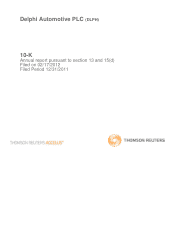 1
1 -
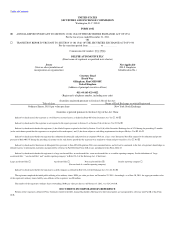 2
2 -
 3
3 -
 4
4 -
 5
5 -
 6
6 -
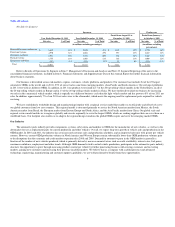 7
7 -
 8
8 -
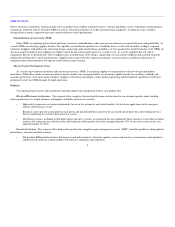 9
9 -
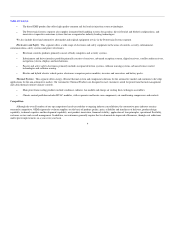 10
10 -
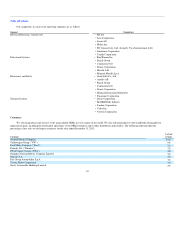 11
11 -
 12
12 -
 13
13 -
 14
14 -
 15
15 -
 16
16 -
 17
17 -
 18
18 -
 19
19 -
 20
20 -
 21
21 -
 22
22 -
 23
23 -
 24
24 -
 25
25 -
 26
26 -
 27
27 -
 28
28 -
 29
29 -
 30
30 -
 31
31 -
 32
32 -
 33
33 -
 34
34 -
 35
35 -
 36
36 -
 37
37 -
 38
38 -
 39
39 -
 40
40 -
 41
41 -
 42
42 -
 43
43 -
 44
44 -
 45
45 -
 46
46 -
 47
47 -
 48
48 -
 49
49 -
 50
50 -
 51
51 -
 52
52 -
 53
53 -
 54
54 -
 55
55 -
 56
56 -
 57
57 -
 58
58 -
 59
59 -
 60
60 -
 61
61 -
 62
62 -
 63
63 -
 64
64 -
 65
65 -
 66
66 -
 67
67 -
 68
68 -
 69
69 -
 70
70 -
 71
71 -
 72
72 -
 73
73 -
 74
74 -
 75
75 -
 76
76 -
 77
77 -
 78
78 -
 79
79 -
 80
80 -
 81
81 -
 82
82 -
 83
83 -
 84
84 -
 85
85 -
 86
86 -
 87
87 -
 88
88 -
 89
89 -
 90
90 -
 91
91 -
 92
92 -
 93
93 -
 94
94 -
 95
95 -
 96
96 -
 97
97 -
 98
98 -
 99
99 -
 100
100 -
 101
101 -
 102
102 -
 103
103 -
 104
104 -
 105
105 -
 106
106 -
 107
107 -
 108
108 -
 109
109 -
 110
110 -
 111
111 -
 112
112 -
 113
113 -
 114
114 -
 115
115 -
 116
116 -
 117
117 -
 118
118 -
 119
119 -
 120
120 -
 121
121 -
 122
122 -
 123
123 -
 124
124 -
 125
125 -
 126
126 -
 127
127 -
 128
128 -
 129
129 -
 130
130 -
 131
131 -
 132
132 -
 133
133 -
 134
134 -
 135
135 -
 136
136 -
 137
137 -
 138
138 -
 139
139 -
 140
140 -
 141
141 -
 142
142 -
 143
143 -
 144
144 -
 145
145 -
 146
146 -
 147
147 -
 148
148 -
 149
149 -
 150
150 -
 151
151 -
 152
152 -
 153
153 -
 154
154 -
 155
155 -
 156
156 -
 157
157 -
 158
158 -
 159
159 -
 160
160 -
 161
161 -
 162
162 -
 163
163 -
 164
164 -
 165
165 -
 166
166 -
 167
167 -
 168
168 -
 169
169 -
 170
170 -
 171
171 -
 172
172 -
 173
173 -
 174
174 -
 175
175 -
 176
176 -
 177
177 -
 178
178 -
 179
179 -
 180
180 -
 181
181 -
 182
182 -
 183
183 -
 184
184 -
 185
185 -
 186
186 -
 187
187 -
 188
188 -
 189
189 -
 190
190 -
 191
191 -
 192
192 -
 193
193 -
 194
194 -
 195
195 -
 196
196 -
 197
197 -
 198
198 -
 199
199 -
 200
200 -
 201
201 -
 202
202 -
 203
203 -
 204
204 -
 205
205 -
 206
206 -
 207
207 -
 208
208 -
 209
209 -
 210
210 -
 211
211 -
 212
212 -
 213
213 -
 214
214 -
 215
215 -
 216
216 -
 217
217 -
 218
218 -
 219
219 -
 220
220 -
 221
221 -
 222
222 -
 223
223 -
 224
224 -
 225
225 -
 226
226 -
 227
227 -
 228
228 -
 229
229 -
 230
230 -
 231
231 -
 232
232 -
 233
233 -
 234
234 -
 235
235
 |
 |

Table of Contents
• The diesel EMS product line offers high quality common rail fuel and air injection system technologies.
• The Powertrain Systems segment also supplies integrated fuel handling systems for gasoline, diesel, flexfuel and biofuel configurations, and
innovative evaporative emissions systems that are recognized as industry-leading technologies.
We also include diesel and automotive aftermarket and original equipment service in the Powertrain Systems segment.
Electronics and Safety. This segment offers a wide range of electronic and safety equipment in the areas of controls, security, infotainment,
communications, safety systems and power electronics.
• Electronic controls products primarily consist of body computers and security systems.
• Infotainment and driver interface portfolio primarily consists of receivers, advanced reception systems, digital receivers, satellite audio receivers,
navigation systems, displays and mechatronics.
• Passive and active safety electronics primarily includes occupant detection systems, collision warning systems, advanced cruise control
technologies and collision sensing.
• Electric and hybrid electric vehicle power electronics comprises power modules, inverters and converters and battery packs.
Thermal Systems. This segment offers energy efficient thermal system and component solutions for the automotive market and continues to develop
applications for the non-automotive market. Our Automotive Thermal Products are designed to meet customers' needs for powertrain thermal management
and cabin thermal comfort (climate control).
• Main powertrain cooling products include condenser, radiator, fan module and charge air cooling heat exchangers assemblies.
• Climate control portfolio includes HVAC modules, with evaporator and heater core components, air conditioning compressors and controls.
Competition
Although the overall number of our top competitors has decreased due to ongoing industry consolidation, the automotive parts industry remains
extremely competitive. OEMs rigorously evaluate suppliers on the basis of product quality, price, reliability and timeliness of delivery, product design
capability, technical expertise and development capability, new product innovation, financial viability, application of lean principles, operational flexibility,
customer service and overall management. In addition, our customers generally require that we demonstrate improved efficiencies, through cost reductions
and/or price improvement, on a year-over-year basis.
9
